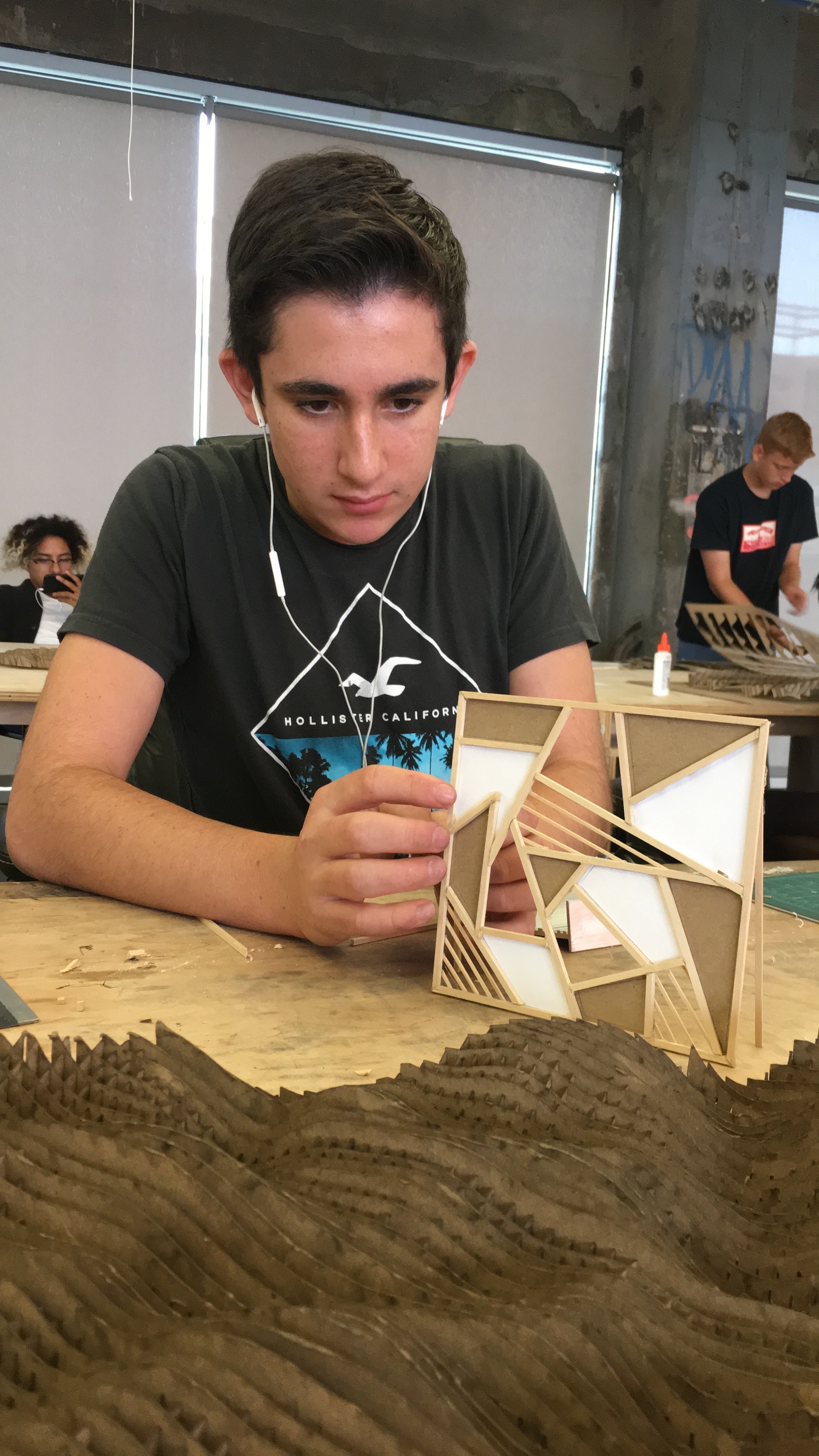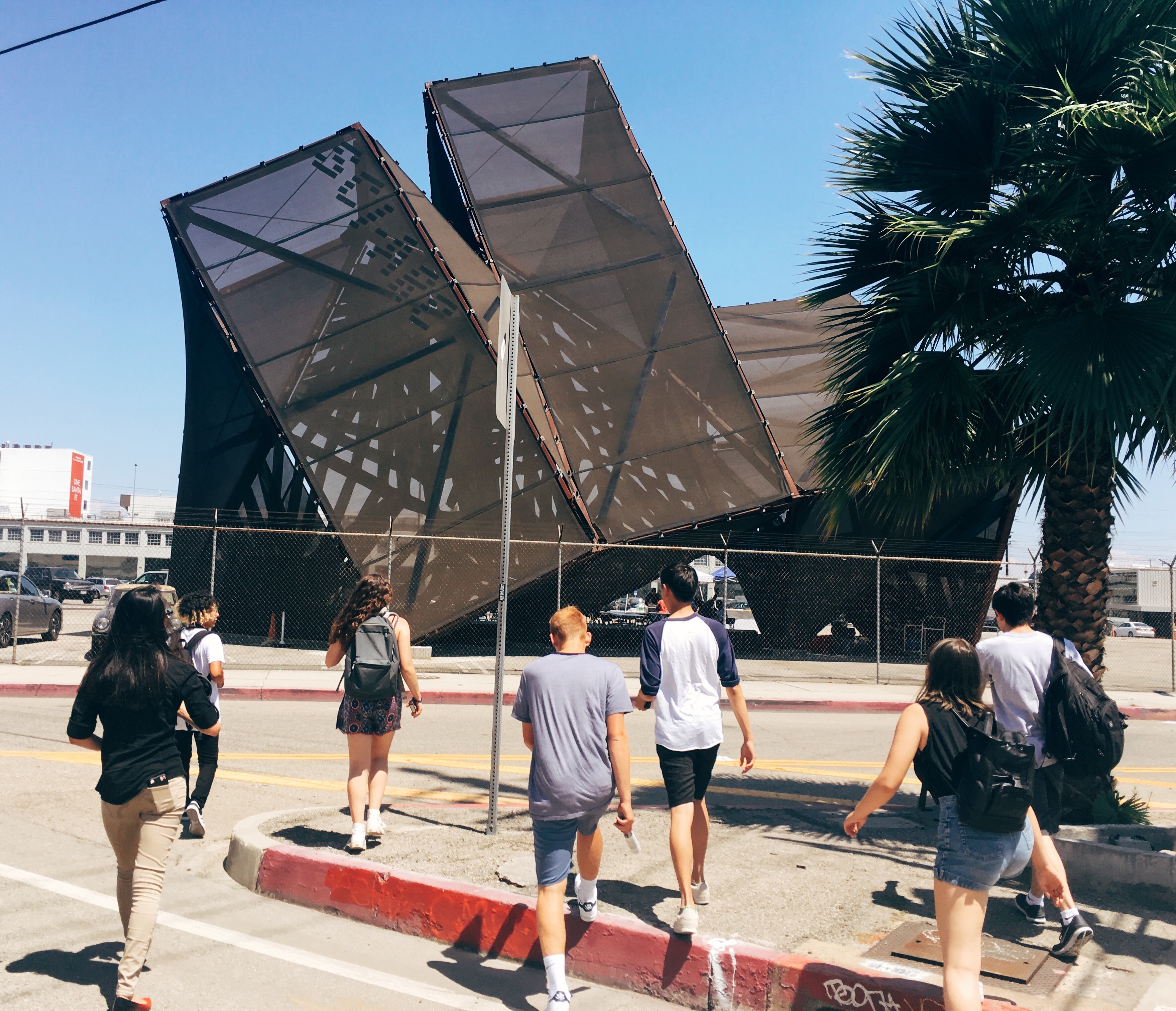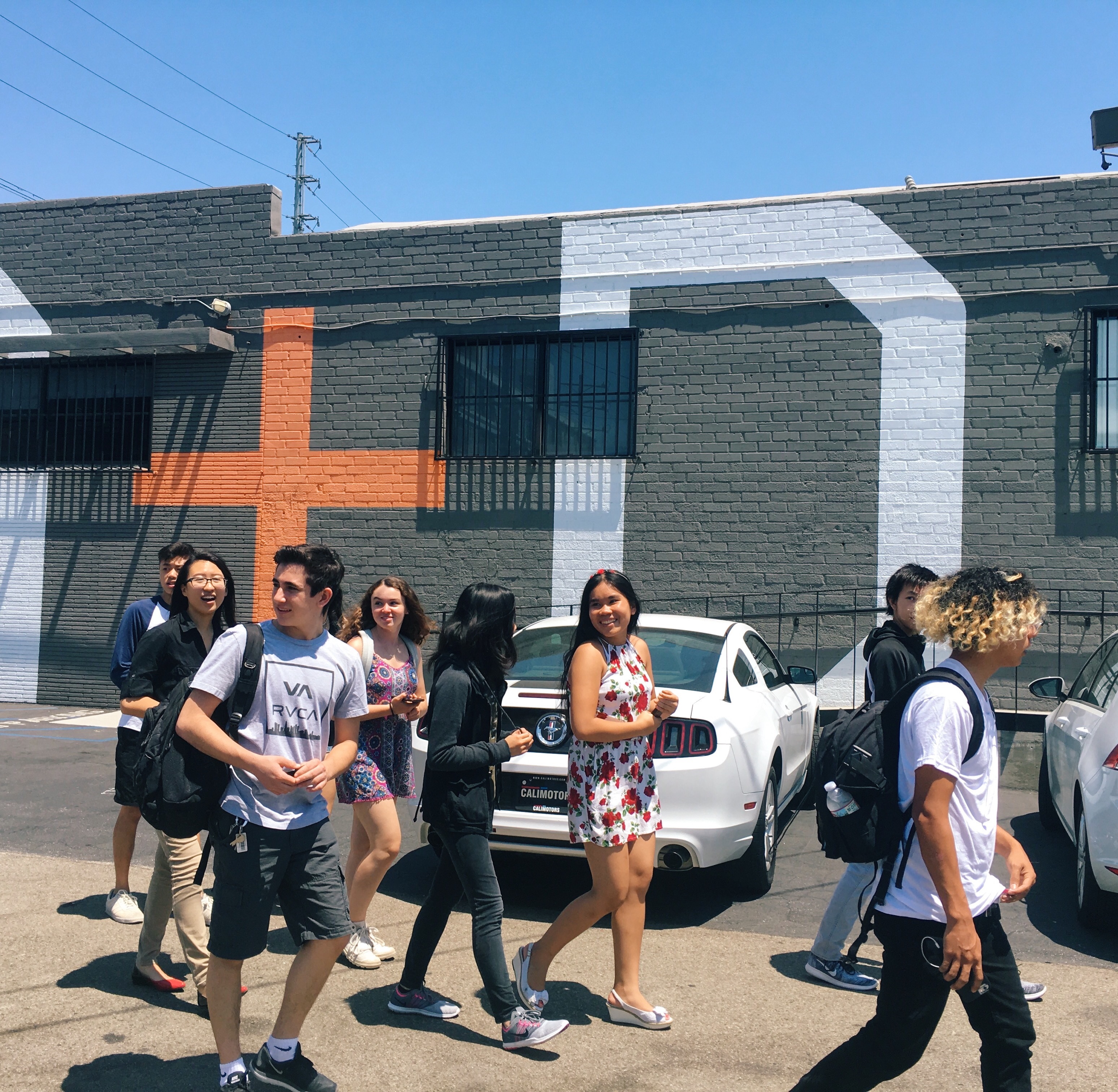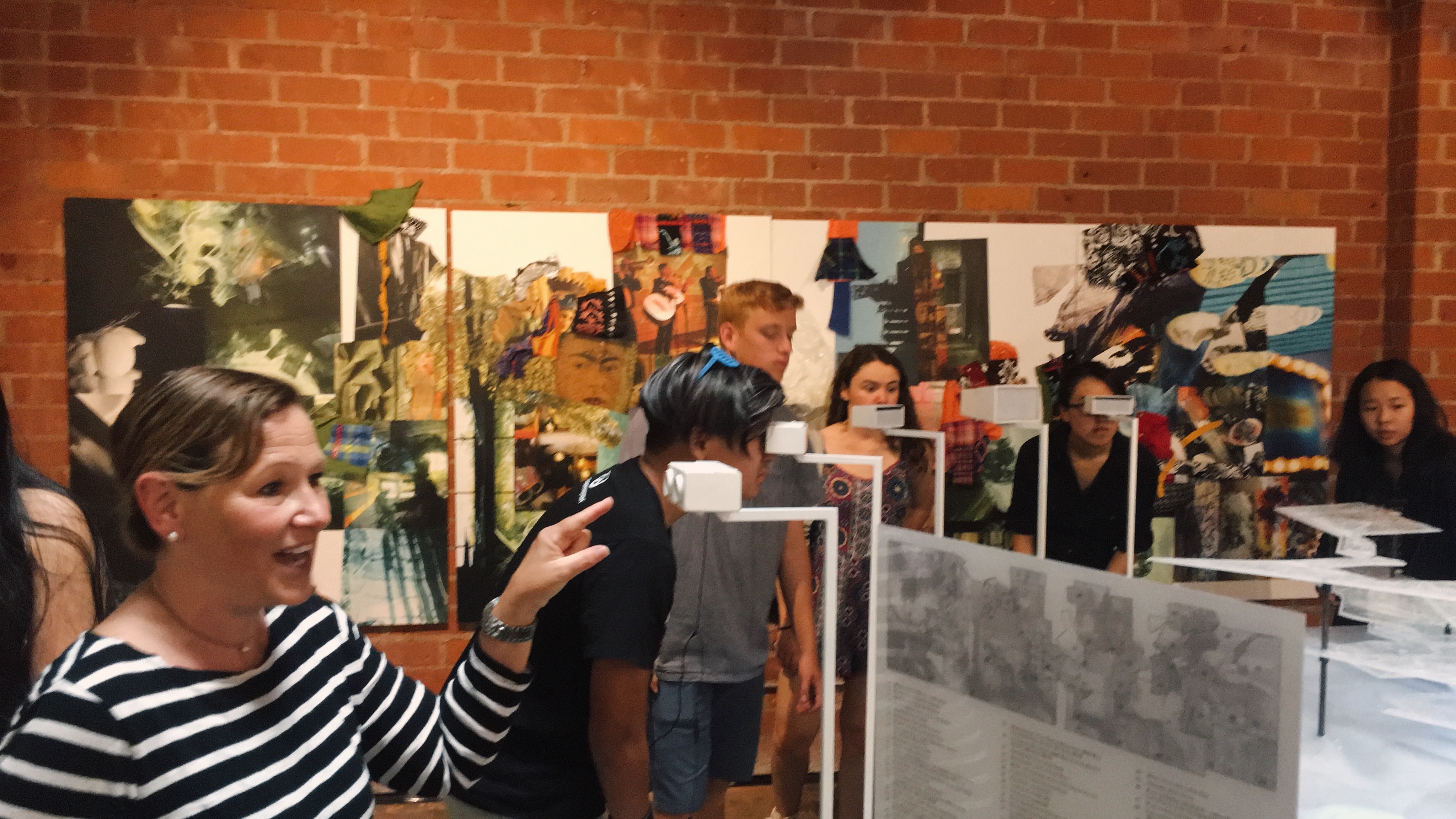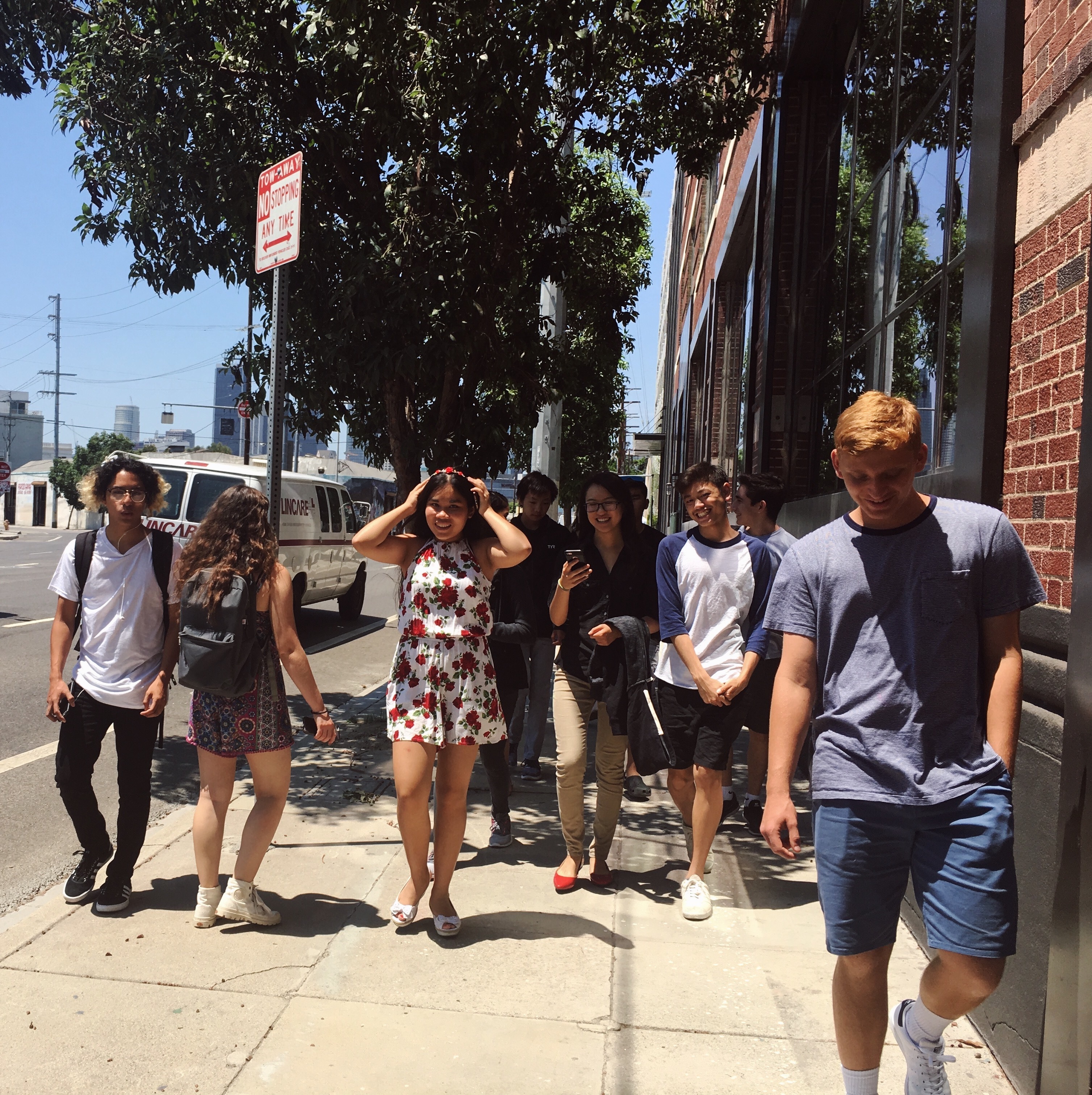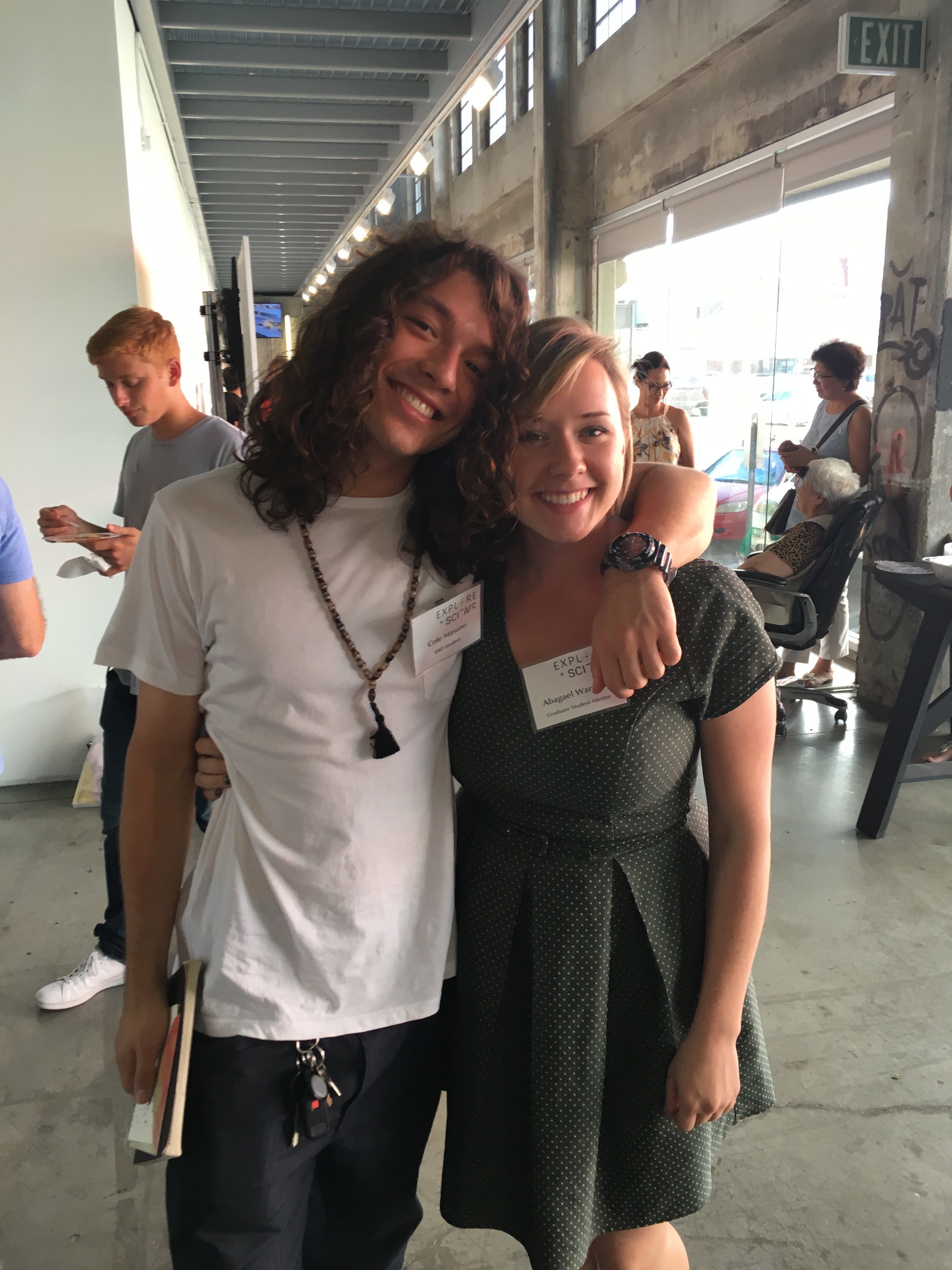SCI-Arc Launches 123 Make Workshop
SCI-Arc hosted a new Pop-Arc initiative this summer on its campus. Designed to expose local high school-aged youth to architectural content in creative venues, the 123 Make workshop leverages a partnership with the Institute for Educational Advancement (IEA), a not-for-profit organization that provides mentors for high school students. Organized by Mira Henry, SCI-Arc’s Youth Outreach coordinator, and Niña Abonal, IEA director of summer mentorship program Explore, the inaugural program hosted five of SCI-Arc’s Design Immersion Days (DID) graduates, and nine IEA high school sophomores and juniors interested in architecture. The workshop brought together students from across Los Angeles, California’s Bay Area, and Washington state.
Whereas DID provides a comprehensive design immersion experience across various digital and analog scales, 123 Make features specialized programming focused on digital fabrication methods including laser cutting, 3D printing, and vacuum forming. In this way, the programming provided a welcome complement the DID curriculum. Students have a portfolio workshop, college readiness interviews, and application and financing guidance, as well as access to SCI-Arc’s fabrication resources and facilities. In addition, there are also local field trips such as the Los Angeles A+D Museum and Hauser & Wirth Gallery.
This summer’s 123 Make edition was taught by two SCI-Arc graduate students, Abagael Warners and Rebecca Wiscombe, who also helped lead this spring’s Zoom workshop at Inner City Arts. “In addition to engaging with the youth of LA, the Pop-Arc initiative is giving upper-level undergraduates and graduates teaching opportunities and pedagogy exploration,” Henry says. “The work is connecting us outwards, but also giving our students opportunities to learn architectural thinking through teaching. I think it helps give students another lens through which to contextualize their education.”
The student-taught workshop also instills goals in the workshop participants. “I'm surprised--but mostly envious--that my program is taught by students in SCI-Arc’s Master's program,” says Cole Masuno, a 123 Make student who will joining SCI-Arc’s B.Arch program in the fall. “I want to one day be able to work at that level, as well as to have an impact as an educator.”
With Henry’s assistance, Warners and Wiscombe guide students through three digital fabrication projects. The first utilizes laser cutting, a topographical exercise that compiles data to construct a 3D surface. The second project is a 3D print, in which students work with a series of dimensional parameters to digitally construct a series of iterative forms.
"This project challenges students to think about design through the tools of production,” Henry explains. “It’s not just about one-to-one of digital to physical, but teaches the freedoms and constraints of 3D printing.”
The third project focuses on vacuum forming. Students work with a two-dimensional pattern and build it into a 3D form with tchotchkes, matchbox cars, toys, figurines, balls, and other small items affixed to a hard substrate. Plastic sheeting overlaid atop the students’ constructs takes a lower resolution form, prompting students to compare high resolution to low resolution outputs of their assemblages using plastic tiles.
“In each exercise, there are tools and techniques, rules and parameters, metrics for success and methods to discuss it,” Henry says. “The maker projects prompt students to talk about the effects of the work they are doing. We encourage students to enjoy the objects at the scale at which they are constructed, as well as project broader architectural intent onto the material studies.”
"SCI-Arc has been this sort of validation for me, that there exists other people like myself and I'm not alone in the world,” Masuno adds. “I have friends, but it makes me really happy to know I can connect here with other passionate individuals.”
